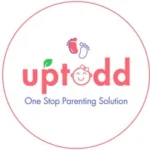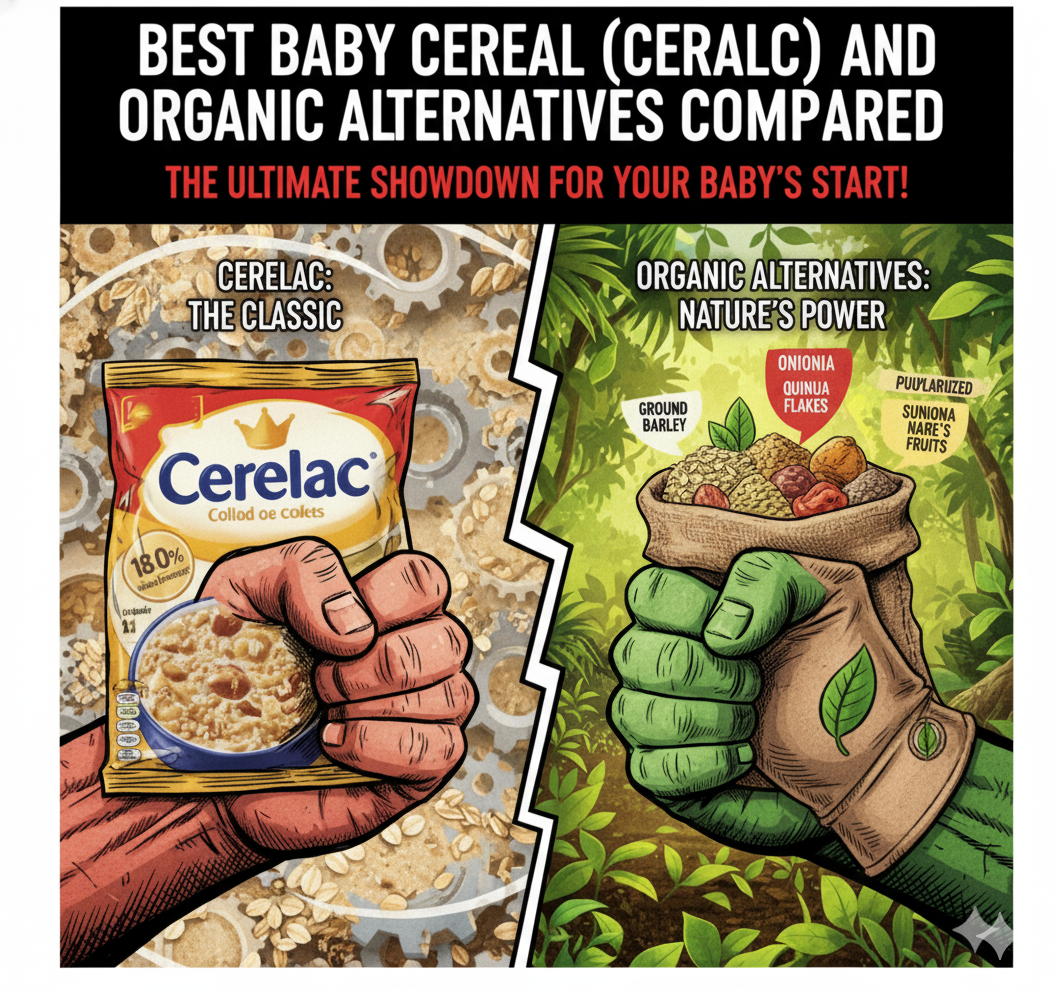
Best Baby Cereal (Cerelac) for your little one and Organic Alternatives
Topic
Best Baby Cereal (Cerelac) for your little one and Organic Alternatives
May start as early as
At 0 Month
─────────
May end around
60 Months
Introduction: Best Baby Cereal
When parents search for the best baby cereal (Cerelac) and organic alternatives for your little one, they are not just looking for a product that says “nutritionally complete.” Today’s families expect transparency about ingredients, processing, and safety checks before trusting any cereal as their child’s first food.
Globally and in India, baby cereals are regulated under standards set by authorities such as the Food Safety and Standards Authority of India (FSSAI), Bureau of Indian Standards (BIS), and guided by World Health Organization (WHO) recommendations. These frameworks require testing for nutrient adequacy, contaminants, heavy metals, and clear labelling so that parents can make informed choices.
Recent discussions around sugar levels, fortification practices, and the use of traditional grains have pushed many manufacturers to reformulate or launch new variants. Alongside established products like wheat- or rice-based cereals, several millet-based, sprouted-grain and organic alternatives have emerged, highlighting features such as no refined sugar, cleaner ingredient lists, and minimal processing.
This guide takes a neutral, data-driven look at the current baby cereal landscape in 2025 reviewing nutritional values, safety regulations, and parent concerns before comparing popular options ranging from traditional fortified cereals to organic millet blends.
What You’ll Find in This Best Baby Cereal Guide
- Top 5 Baby Cereal Brands in India
- Types of Tests & Checks Required or Recommended
- Key Authorities & Regulatory Frameworks in India
- Why Babies Spit or Reject Cereal: Common Parental Problems
- How to Introduce Cereal Safely: Expert Tips
- Storage & Allergen Safety Checklist
- Key Points to Keep in Mind
- What If the Cereal Doesn’t Suit Your Baby: Expert Tips
- When to Seek Medical Help Immediately
- Harmful Ingredients to Avoid
- Expert Recommendations & Feeding Guide
- Expert Viewpoint: Clean Nutrition Is the New Standard
- Regulatory & Quality Controls
- Conclusion
- FAQs
Each section is designed to help you make informed, confident decisions about your baby’s first foods with a focus on transparency, ingredient quality, and real nutritional value.
Top 5 Best Baby cereal Brands
1-UpTodd Baby Cereal:
UpTodd integrates nutrition science with parental support, offering cereals made from sprouted millets and natural ingredients alongside after-purchase access to certified nutritionists. This feature allows parents to discuss feeding concerns, allergy symptoms, and dietary progression directly with experts. Such ongoing support remains rare among baby food brands in India and reflects UpTodd’s focus on both nutrition quality and parent education.
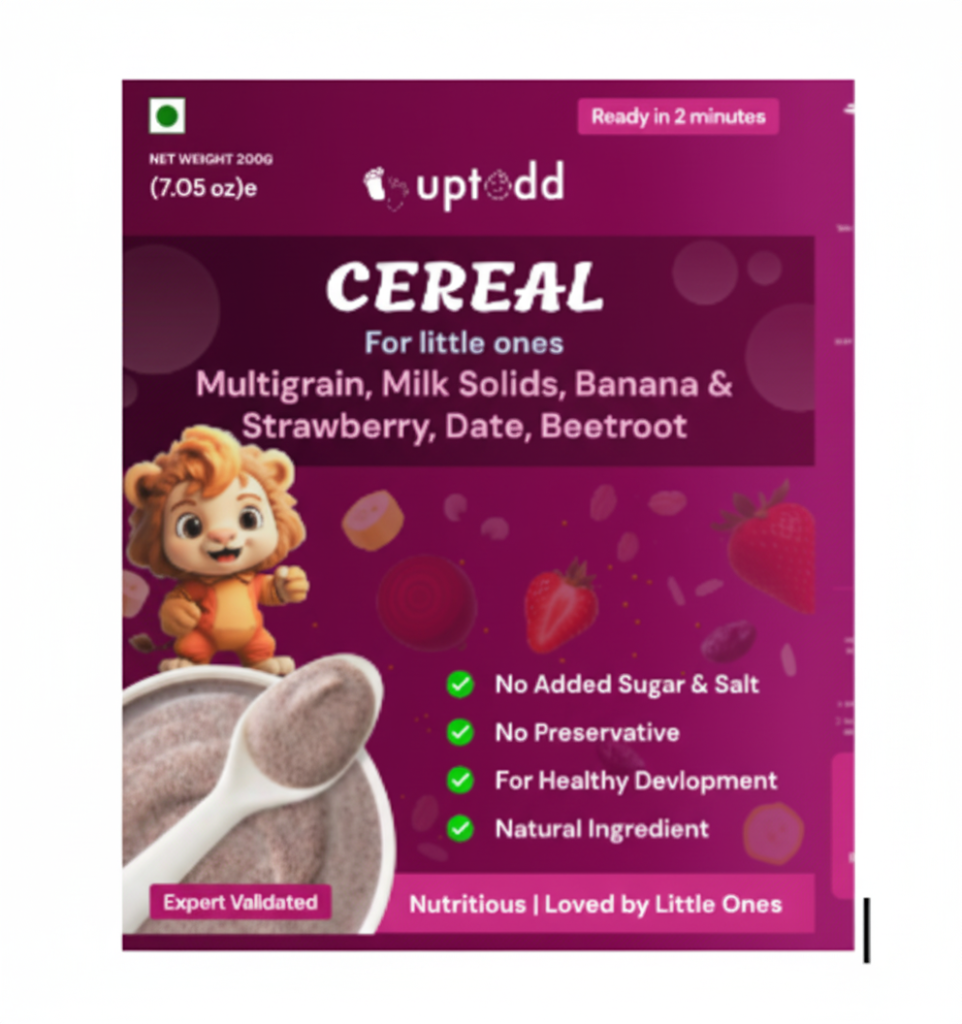
Ingredients & Nutrition Profile Best baby Cereal
UpTodd Baby Cereal is formulated with organic ingredients sourced directly from farms
There are different variants of baby cereals, with some key baby cereals contains –
- High Calcium (≈ 485–500 mg per 100 g) → Supports healthy bone and teeth development.
- Good Protein Content (6–15 g per 100 g) → Helps in growth, muscle repair, and overall development.
- Rich in Iron (≈ 2.3–2.5 mg per 100 g) → Supports cognitive development and helps prevent anaemia.
- Fortified with Vitamin A (400 mcg) → Important for vision and immune function.
- Contains Vitamin C (40 mg) → Enhances immunity and helps with iron absorption.
- Provides B-complex Vitamins (B1, B2, Niacin, B6, B12, Folic Acid) → Supports brain development,
No refined sugar, maltodextrin, or artificial preservatives are used.
Safety Rating for Best Baby Cereal
According to independent safety analysis, UpTodd scores 9.5 out of 10, tied with top organic peers, reflecting:
- Zero added sugar
- No artificial colours or flavours
- Certified free from preservatives and emulsifiers
- NABL and FSSAI organic compliance
UpTodd’s cereal has no refined sugar, or preservatives.
- Natural sweetness from banana & apple powder
- Probiotic + Prebiotic blend (inulin, FOS)
- Sprouted Ragi & Jowar → rich in calcium & antioxidants
- Fortified naturally via yeast extract (Bcomplex, D, A, C)
🧠 Key Insight: Unlike Cerelac, UpTodd derives fortification from natural yeast and food based nutrients not synthetic isolates
Packaging and Pricing for Best Baby Cereal
UpTodd is priced at 249-299 for a 200 g pack, positioning it competitively against mid premium segments. Packaging is fully recyclable, with clear front of pack labelling on ingredients, age suitability (6+ months), and preparation instructions.
Pros
- 100% clean label – No refined sugar, maltodextrin, or preservatives.
- Rich in natural nutrients – Sprouted millets, pulses, and fruit-based vitamins.
- High protein and fibre (3 g and 1.8 g per serve).
- Probiotic + prebiotic blend for gut health.
- NABL LAB & FSSAI certified organic
Best Part Best Baby Uptodd cereal
UpTodd is currently the only baby cereal brand in India providing dedicated post-purchase nutritionist support. Parents can consult trained child nutrition sage bot backed with experts for feeding guidance, texture transitions, or allergy-related questions after purchase. This level of ongoing support is uncommon among both large manufacturers and organic start-ups, making UpTodd’s model more aligned with modern parental needs for personalized feeding advice and transparency beyond the product label.
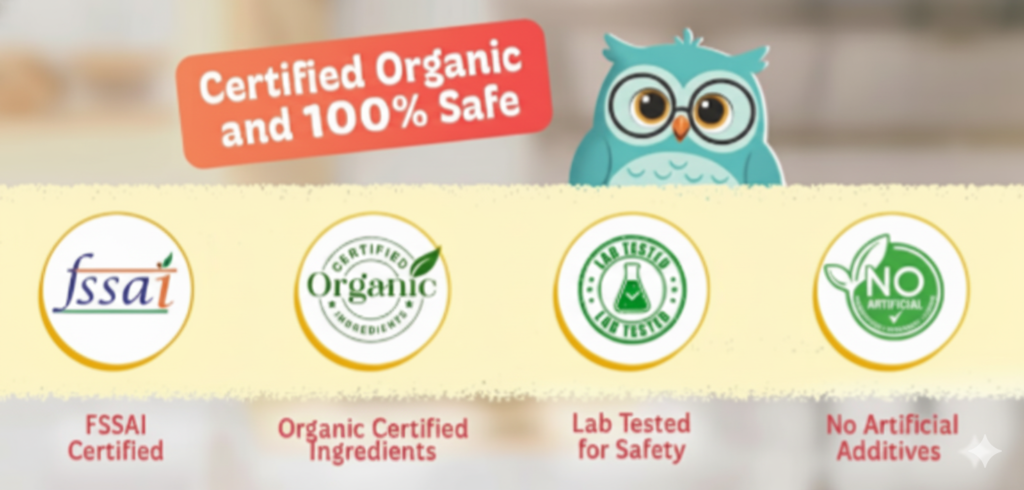
Cons
- At ₹249-₹299 for 200 g, we fall into a more premium price bracket than some mass-market brands like Cerelac.
- Limited retail availability – mainly sold online or in premium stores.
This article highly dependent on the data available on the online sources and may little vary from the original source
2-Cerelac Reformulation (Nestle)
In October 2024, NestleIndia unveiled Cerelac variants with no refined sugar, expanding its portfolio to 21 SKUs. Fourteen sugar free options now carry MRPs between ₹235–₹299 for 300–350 g packs. The reformulated Cerelac Wheat formula lists:
Nestle claims adherence to FSSAI and BIS standards along with Codex guidelines.
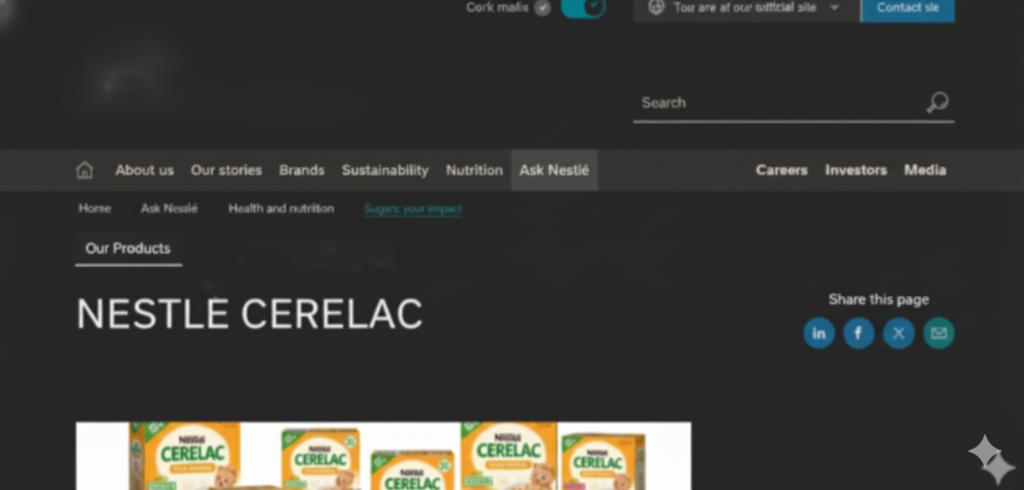
Ceregrow Launch
In early 2025, Ceregrow no-refined sugar variant for 2–5 year olds was introduced, featuring oats, wheat, rice, milk solids, dried fruits, and 19 nutrients including omega3 ALA and vitamin D.
Historical Sugar Controversy
Prior to reformulation, Swiss NGO Public Eye reported Cerelac in India contained 2.7 g of added sugar per serving, compared to zero in European markets. This discrepancy spurred FSSAI review panels and drew global scrutiny, prompting the no sugar launches.
Read the complete article on The Nestle containing sugar in baby food here
Safety Rating
As a product from a global FMCG giant, Cerelac adheres to strict international and national food safety standards (FSSAI). However, its safety profile is distinct from 100% “clean label” brands.
Score: Typically rated 7-8/10 by health platforms, reflecting its scientific formulation but deduction for the use of additives like emulsifiers and maltodextrin.
No Added Sucrose: The key differentiator in this variant.
Contains: Emulsifiers (Soy Lecithin) and maltodextrin.
Compliance: FSSAI certified. Not an organic-certified product.
Packaging and Pricing
Cerelac is widely available in a signature box with a metalized laminate inner pouch for freshness. It is a mass-market product, making it highly accessible.
Price: Approximately 235 – ₹299 for a 300 g box.
Availability: Sold in virtually all grocery stores, pharmacies, and online platforms across the country.
Pros
- Affordable and accessible – available pan India (₹235–₹262).
- Now 0 g refined sugar in 14 new SKUs.
- Scientifically tested & FSSAI compliant.
- Backed by medical trust and paediatric recommendations.
Cons
- Still uses processed ingredients like milk solids and soybean oil.
- Lower fibre and protein than organic brands.
- Ingredient transparency can be limited (e.g., unclear fortification sources).
- Some older SKUs still contain sugar : parents must read labels carefully
- No Expert Handholding After purchase: there’s no direct access to a certified nutritionist or expert guidance. For new parents navigating feeding milestones, the absence of professional support can make the journey stressful.
- One-Size-Fits-All Approach : While the cereals are nutritious, there’s no personalized aftercare. Parents who want clarity on portion sizes, stage-wise feeding, or allergy management are left without brand-backed nutritionist advice.
3-Slurrp Farm
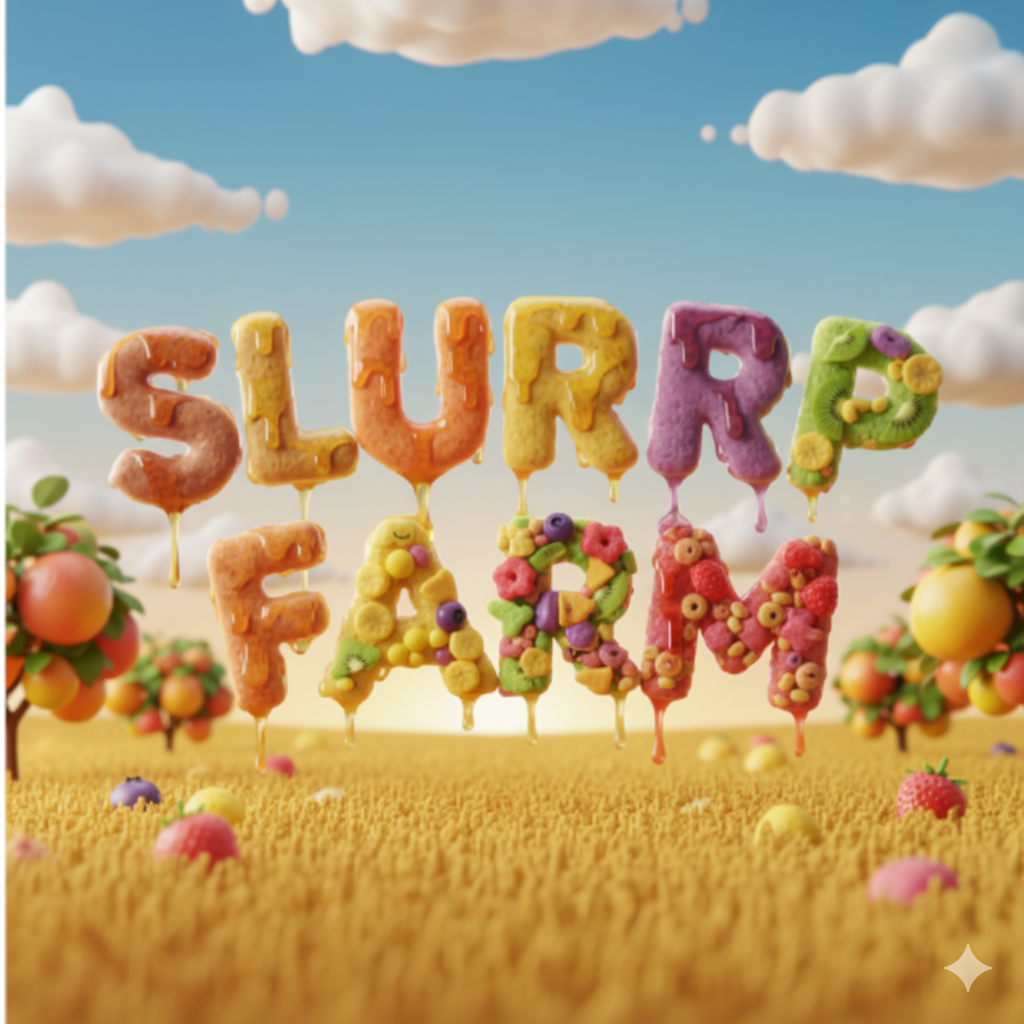
Ingredients & Nutrition Profile
Slurrp Farm cereals are formulated with a focus on grains, millets, and superfoods, promoting a “no junk” philosophy. They avoid refined sugar and use natural ingredients for sweetness and flavour.
The blend typically includes:
Multigrain Millets: A mix of ragi, jowar, bajra, and others, providing a diverse nutrient base.
Oats & Quinoa: Added for their high protein and fibre content, providing sustained energy.
Amaranth: A pseudo cereal known for its high-quality protein and micronutrients.
Dried Fruits (e.g., Banana, Apple): Used as a natural sweetener instead of refined sugar.
Natural Flavours: Some variants may include these to enhance taste, which is a point of differentiation from brands that use only whole food powders.
Other Micronutrients: Contains a range of vitamins and minerals, often from the natural ingredients themselves, with some variants being fortified.
Safety Rating
Slurrp Farm positions itself as an honest, health-forward brand for modern parents.
Score: 8/10, as per the user’s input. This reflects its minimal processing and lack of refined sugar, with a slight deduction for the use of “natural flavours” in some products.
No Refined Sugar: Sweetened only with fruit powders.
May Contain: Natural flavours (as explicitly mentioned in the user’s note).
Compliance: FSSAI licensed and often uses organic ingredients, though specific organic certification should be checked per product.
Packaging and Pricing
Slurrp Farm uses attractive, eco-conscious packaging, often with a rustic and playful design. It is positioned in the premium segment.
Price: Approximately ₹320-349 for a 300 g pack.
Pros
- Diverse Grain & Superfood Blend: Includes a wide array of nutritious ingredients like millets, quinoa, and amaranth, offering varied nutrition.
- No Refined Sugar: Relies on dried fruits for natural sweetness.
- High in Protein and Fibre: The combination of millets, oats, and quinoa contributes to a strong protein (~3.2g) and fibber (~2g) profile.
- “No Junk” Promise: The brand ethos is built around transparency and avoiding artificial additives.
- Eco-friendly & Attractive Packaging: Appeals to environmentally conscious parents.
Cons
- Premium Price Point: Priced at ₹320-350, it is one of the more expensive options in the category.
- “With milk” variants: They promise a complete meal with milk included, but that also means not suitable for lactose-intolerant babies or families avoiding dairy.
- Fortification is Not a Key Highlight: While nutritious, the focus is more on the inherent goodness of the ingredients rather than targeted, high-level fortification like Cerelac.
- Lack of Nutritionist Guidance : Unlike some premium baby food services that provide nutritionist consultations, Slurrp Farm offers no direct after-purchase support. Parents who need help with portion sizes, food combinations, or allergy queries are left to figure it out themselves.
- No Personalized Feeding Plans : Every baby has different needs, but with Slurrp Farm there’s no channel for tailored advice (e.g., what to pair cereals with, how to transition between stages). For first-time parents, this lack of hand-holding can feel like a gap.
4-Happa Foods Baby Cereal
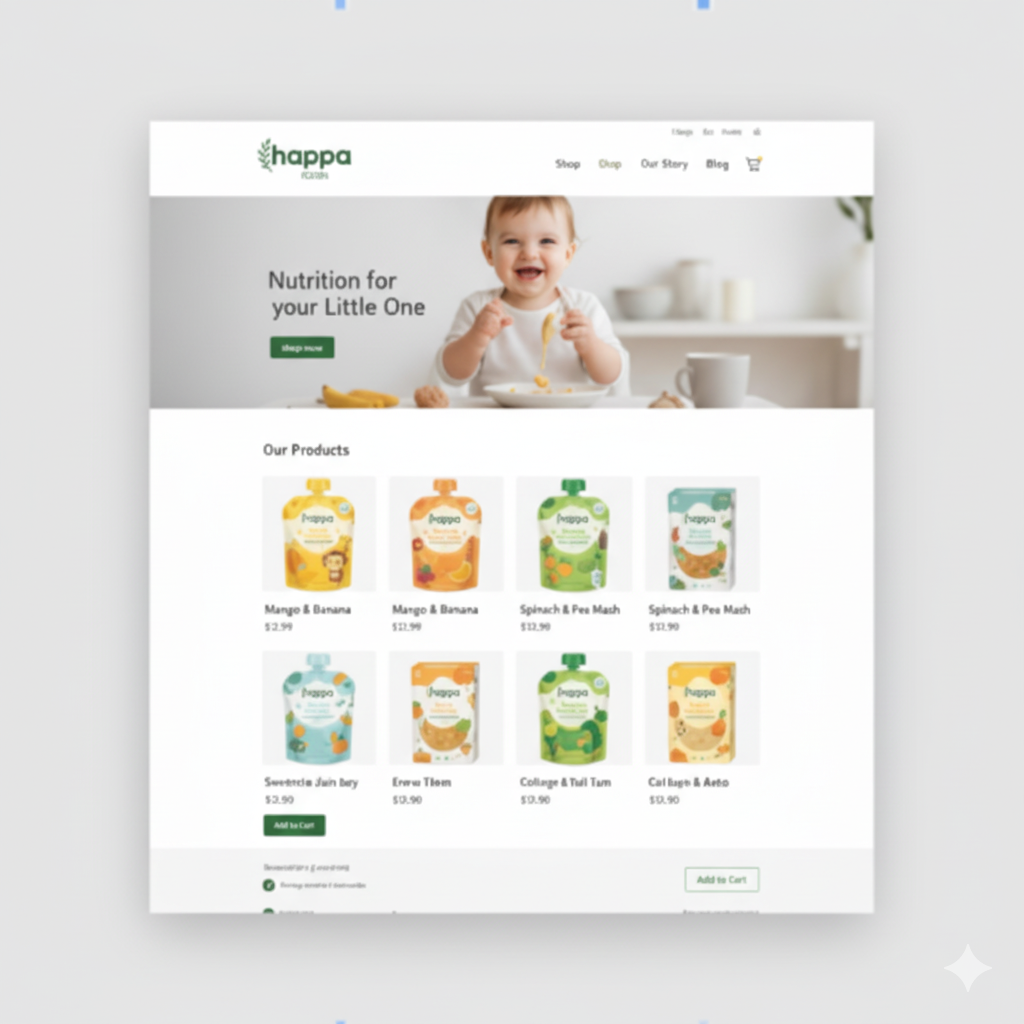
Ingredients & Nutrition Profile
Happa Foods focuses on creating nutrient-dense, organic baby foods with traditional Indian ingredients and flavours. Their cereals are known for simple, powerful recipes that often include nuts and spices, which is a distinct differentiator.
The blend typically includes:
Sprouted Ragi (Finger Millet): The primary ingredient, known for its exceptionally high natural calcium and iron content.
Nuts (e.g., Almonds, Cashews): Added for healthy fats, protein, and essential micronutrients. [Important Note: Introduces potential allergens.
Cardamom: Used as a natural flavor enhancer, introducing babies to traditional Indian spices without any artificial flavors.
No Refined Sugar or Preservatives: Relies on the natural sweetness of the sprouted ragi and the inherent flavour of cardamom.
Happa Foods maintains a high standard of purity and safety, aligning with clean-label and organic principles.
Score: 8.5/10, as per the user’s input. This reflects its certified organic status, absence of added sugar and preservatives, and minimal ingredient list.
Certified Organic: Compliant with India’s NPOP standards, ensuring the ingredients are grown without synthetic pesticides.
No Added Sugar or Preservatives: True to its clean-label promise.
Allergen Note: Contains Nuts – This is a critical safety and dietary consideration for parents.
Compliance: NPOP and FSSAI certified.
Packaging and Pricing
Happa Foods uses packaging that emphasizes its organic and natural ethos. The price point is competitive, though the package size is smaller.
Price: ₹299-349 for a 200 g pack. (Note: This results in a higher cost per gram compared to 300g packs).Availability: Primarily available through online channels (their website, e-commerce platforms) and in select premium or organic stores.
Pros
Exceptionally High Natural Nutrients: Sprouted ragi provides a powerhouse of natural calcium (45 mg) and iron (2.8 mg) without relying heavily on synthetic fortification.
100% Clean Label: No added sugar, maltodextrin, preservatives, or artificial flavours.
Certified Organic (NPOP): Guarantees the quality and organic nature of the ingredients.
Introduces Spices & Nuts: Thoughtfully introduces potential allergens like nuts and the flavour of cardamom in a controlled manner, which can be beneficial for developing diverse palates and immunity. High Safety and Quality Rating (9/10): Reflects its purity and organic compliance.
Cons
- Higher cost per 100 g vs 300 g mass-market packs
With list prices ₹299–₹349 for 200 g, the per-gram price is generally higher than many 300 g mainstream cereals (often ₹250–₹310 MRP). For price-sensitive families, that’s a real trade-off.
- Smaller pack size means more frequent repurchase
Predominantly 200 g packs can run out faster than 300 g mass-market boxes, increasing ordering frequency and effective monthly spend.
- Not fortified in some SKUs (e.g., single-ingredient cereal)
At least one cereal is marketed as “Only 1 ingredient” (sprouted brown rice) with no additives. That’s clean-label, but it may lack the iron/calcium/vitamin premix parents expect in infant cereals, a consideration for meeting daily micronutrient needs.
- No Professional Feeding Guidance
Once parents buy the pack, there is no direct channel to connect with a qualified nutritionist. This leaves families without expert input on how to adapt the cereal to their baby’s stage, appetite, or special needs.
- Missing Ongoing Support System
Beyond the label, there’s no structured aftercare, no helpline, no chat, no personalized plan. Parents dealing with questions on digestion, food combinations, or growth milestones must look elsewhere for answers.
- One-Dimensional Product Approach
The focus stops at selling the cereal itself. Without nutritionist-backed after-purchase guidance, parents miss out on the reassurance and tailored advice that could help them introduce the food with confidence.
5-BebeBurp Baby Cereal
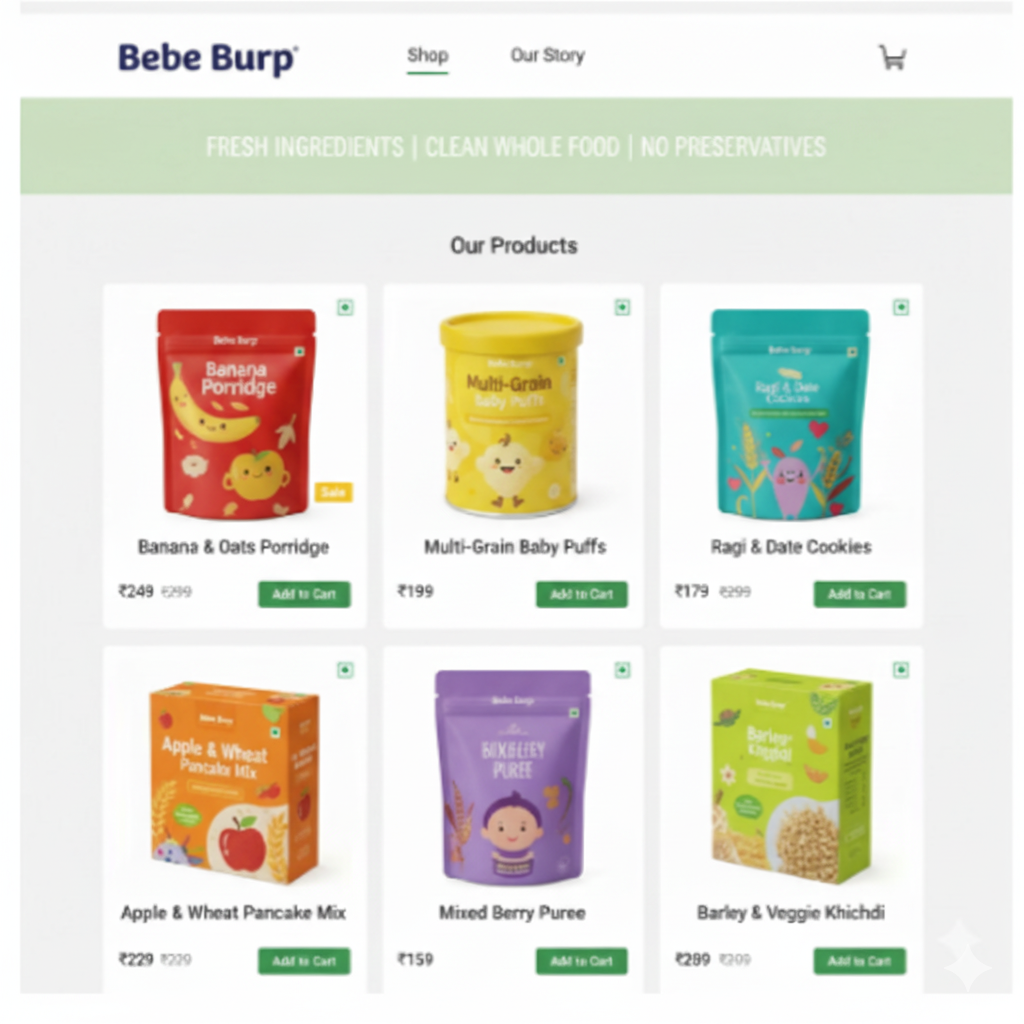
Ingredients & Nutrition Profile
BebeBurp positions itself as a premium, holistic infant nutrition brand that combines organic cereals with the goodness of vegetables and fruits. Its formulation is designed to offer a well-rounded meal with an emphasis on gut health.
The blend typically includes:
Organic Cereals: A base of traditional cereals like wheat, rice, or millets, providing complex carbohydrates.
Dehydrated Vegetables (e.g., Spinach, Pumpkin, Carrot): Integrated to add natural vitamins, minerals, and fibber, helping in the development of a taste for savoury flavours.
Dehydrated Fruits (e.g., Apple, Banana): Used for natural sweetness and additional nutrients.
Probiotic Blend: Includes strains like Lactobacillus to support a healthy gut microbiome and digestion. No Refined Sugar or Preservatives: Adheres to a clean-label philosophy..
Packaging and Pricing
BebeBurp uses quality, airtight packaging to maintain freshness and protect its probiotic content. It is positioned in the premium segment.
Price: ₹300 for a 250 g pack.
Availability: Primarily a Direct-to-Consumer (D2C) brand, sold through its website and major e-commerce platforms like Amazon and First Cry.
Pros
Dual Organic Certification (USDA & NPOP): This is a significant trust marker, indicating rigorous compliance with international and national organic standards.
Unique Veggie + Fruit Blend: Introduces vegetables early on, which can help in developing a taste for a wider range of flavours beyond just sweetness.
Cons
Premium Price for a Mid-Sized Pack: At ₹300 for 250g, the effective cost is higher than brands offering 300g packs at a similar price (like UpTodd).
Limited Retail Availability: As with many D2C brands, it is not easily found in local grocery stores.
No Access to Certified Nutritionists
Infant feeding is not one-size-fits-all. Without access to certified paediatric nutritionists, parents are left to interpret packaging on their own, which can increase the risk of incorrect portioning, delayed food transitions, or nutrient gaps.
Potential for Specific Taste: The inclusion of vegetables might result in a less universally sweet taste, which some babies might need time to accept compared to fruit-only sweetened cereals
No Safety Net for Parents
If parents encounter feeding challenges or developmental concerns, the brand provides no expert-backed safety net. Families must independently seek external nutritionists or paediatricians, adding both cost and uncertainty to what should be a supported journey.
Absence of Structured Post-Purchase Guidance
Unlike what healthcare authorities recommend for infant nutrition continuous monitoring and adjustment there is no structured after-purchase system to guide parents. This lack of professional oversight means concerns like allergies, digestion, or stage-appropriate feeding are not addressed by the brand.
Types of Tests & Checks Required or Recommended for Best Baby Cereal
To ensure safety and compliance, a baby cereal like Cerelac typically undergoes various tests at different stages. Here are the major categories and methods (as per Indian regulatory documents).
- Heavy Metals & Contaminants Testing: Checks for harmful levels of lead, arsenic, cadmium, and mercury to ensure the ingredients are sourced from clean soils and processing is safe.
- Microbiological Safety: Tests for dangerous pathogens like Salmonella and E. coli, which are critical for protecting an infant’s vulnerable digestive system.
- Nutrient Verification: Confirms that the protein, fat, and carbohydrate levels are accurate, and that fortified nutrients like iron, calcium, and vitamins meet the declared values on the label.
- Additive and Pesticide Screening: Verifies the product is free from prohibited artificial colours, sweeteners, and preservatives, and checks for unsafe levels of pesticide residues.
- Stability and Shelf-Life Analysis: Measures moisture content and water activity to prevent spoilage and determine a safe expiration date, ensuring the product remains fresh.
- Physical and Sensory Checks: Inspects for any foreign materials and checks for off-odours or colours, guaranteeing the product is physically pure and appealing.
- Packaging Safety: Conducts migration tests to ensure the packaging materials do not leach any harmful chemicals into the food over time.
Allergen Verification: For products containing common allergens like milk, soy, or nuts, specific tests are run to confirm the label is accurate and to prevent accidental exposure.
Key Authorities & Regulatory Frameworks in India
- FSSAI (Food Safety and Standards Authority of India): Serves as the primary national regulator, setting all mandatory rules for safety, contaminants, permitted additives, and accurate labelling specifically for infant foods.
- BIS (Bureau of Indian Standards): Provides the detailed product standards that define the composition and quality for different types of infant cereals, such as processed cereal-based or milk-cereal based complementary foods.
- NABL Accredited & Government Labs: These authorized laboratories perform the actual physical testing of the products, checking for heavy metals, pathogens, and nutrient levels using FSSAI-approved methods to ensure compliance.
- Additive and Contaminant Compliance: Manufacturing must strictly adhere to FSSAI regulations that list which substances are permitted or prohibited, ensuring no harmful preservatives, colours, or pesticide residues are present.
- Product Stability and Shelf-Life Testing: Through moisture and water activity analysis, manufacturers verify the product remains stable and resistant to microbial growth throughout its stated shelf life.
- Physical Purity Inspection: Products are checked for any foreign matter, off-odours, or unacceptable textures to ensure they are physically clean and palatable for infants.
- Packaging Safety Validation: The packaging materials are tested to guarantee they are food-safe and do not transfer any harmful chemicals into the cereal powder
- Allergen Labelling Verification: For formulations containing common allergens like milk or wheat, specific tests are conducted to confirm that the allergen information on the label is accurate and reliable for parents.
Parents worry: “Is it the taste? Is it an allergy? Is the cereal the wrong texture?”
1. Why babies spit or reject cereal common parental problems (and what they signal)
i. Typical scenarios parents report after buying Best baby Cereal
- The baby takes cereal, then spits most of it out.
- Baby gags at thick or lumpy textures.
- The baby cries during feedings and refuses the spoon.
- Parents worry: “Is it the taste? Is it an allergy? Is the cereal the wrong texture?”
ii. Common causes
- Texture mismatch Too thick, too lumpy, or too thin compared with what baby expects.
- Oral motor development Until ~6–9 months babies are still learning to move food from front to back of the mouth; gagging is common when new textures arrive.
- Gastroesophageal reflux (GER) Spitting up can be reflux rather than rejection.
- Taste preference / sweetness Babies prefer sweet tastes; an unexpectedly bland or unfamiliar flavour can cause refusal.
- Sensory sensitivity Strong smells or unfamiliar textures can provoke refusal.
- Allergy or intolerance Immediate vomiting, hives, breathing difficulty, or persistent diarrhoea warrant urgent medical review.
- Feeding technique Distracted baby, wrong spoon size or timing (too hungry or too full).
iii. What to do when toddler spits out food
- Occasional spitting or mild gagging when babies start solids is common and usually resolves with gradual texture progression. Persistent vomiting, feeding distress, or allergic reactions, however, are not normal and should be assessed by a healthcare provider.
iv. The science behind feeding responses
- Oral-motor maturation: Sucking and swallowing reflexes evolve into chewing and coordinated tongue movements over months. Texture progression (smooth → mashed → lumpier) supports this development.
- Taste learning: Early exposure shapes preferences. WHO recommends avoiding added sugars in complementary foods for under-3s to prevent early sweet preference and dental/obesity risks.
- Gut and microbiome: Prebiotic and probiotic ingredients can support digestion and stool regularity; excessively processed carbs (e.g., maltodextrin) may affect glycaemic response and gut flora. Some newer formulations including those based on sprouted grains like millet blends from UpTodd or organic peers highlight this aspect by adding natural prebiotic/probiotic elements.
- Micronutrient needs: Iron is critical after 6 months; cereals that provide meaningful iron per serving help reduce deficiency risk.
2.How to introduce cereal safely ( Expert tips)
- Start at 6 months when the baby can sit with support and show interest.
- Begin with 1–2 teaspoons mixed with breastmilk/formula (smooth texture).
- Over 7–14 days increase to 3–4 tablespoons, progressing texture from smooth → mashed → lumpy.
- Introduce new single ingredients at 3–5 day intervals to spot allergies.
- Avoid adding sugar, honey or excessive salt.
- If the baby spits repeatedly, pause 24–48 hours and re-attempt with thinner texture or different spoon; seek paediatrician if other symptoms (rash, breathing difficulty, bloody stools).
3.Storage & Allergen Safety Checklist
Before introducing or storing any cereal, remember:
- Check allergen labels: milk solids, soy, gluten, nuts, or sesame may appear even in “natural” cereals.
- Expiry & batch info: always note the “use by” date; avoid buying open or puffed packs.
- Preparation hygiene: uses boiled and cooled water, sterilized spoons, and clean storage jars.
- Storage: keep opened packs in airtight containers; use within 3–4 weeks; avoid refrigeration unless specified.
- Avoid reheating prepared cereal: discard leftovers after 30 minutes to prevent bacterial growth.
Observe the first three feeds: introduce one cereal type at a time and watch for rash, vomiting, or swelling.
4. Key Points to Keep in Mind
- Shelf presence matters. If an “ideal” brand is only available online or intermittently, families often switch brands frequently. Frequent switching can affect a baby’s digestive adaptation and make it harder to identify an intolerance or allergy.
- After-purchase support is uneven. Many organic brands and even some large companies do not provide dedicated post-purchase nutritionist support; customer helplines vary. Parents should check brand resources before buying if ongoing guidance is important.
- Product turnover. Some mass-market SKUs (older formulations with sugar) may still appear in stores; reading the label is essential. Parents increasingly report trying newer millet-based brands like UpTodd, Happa, or Slurrp Farm when they want to avoid maltodextrin or added sugar, but accessibility and consistency still influence final choice.
5.What if the cereal doesn’t suit your baby? (Expert Tips)
- Stop the product and observe: if symptoms are mild (spitting, fussiness) consider texture or feeding method first.
- Reintroduce gradually with smaller amounts mixed into familiar milk or puree.
- Single-ingredient test: reintroduce one new grain or brand at a time separated by 3–5 days.
- Seek urgent care for signs of allergy: hives, facial swelling, difficulty breathing, persistent vomiting.
- Consult a paediatrician / dietitian if the baby has chronic constipation, failure to thrive, or persistent refusal.
When to Seek Medical Help Immediately
If your baby shows any of the following after consuming cereal:
- Persistent vomiting, blood in stools, or signs of dehydration.
- Wheezing, lip or eye swelling, or hives.
- Sudden lethargy or difficulty breathing.
Stop feeding and seek emergency medical attention right away.
Early recognition of allergy or intolerance prevents long-term complications and helps identify safe alternatives quickly.
6.Harmful Ingredients to Avoid
- Added Sugar: Linked to obesity and cavities, the WHO recommends no added sugar for children under three.
- Maltodextrin: Can cause rapid blood sugar spikes and may harm the developing gut microbiome.
- Artificial Preservatives & Colours: Can trigger allergic reactions, asthma, and behavioural sensitivities in children.
- Refined Grains: Offer little nutritional value and are quickly digested, leading to unhealthy energy spikes.
7.Expert Recommendations & Feeding Guide
WHO & FSSAI Guidelines
- Sugar: No added sugars for under 3s.
- Salt: Minimal sodium (<200 mg per day).
- Fortification: Iron and zinc important for cognitive development.
Age-Wise Milestones
- 6–8 Months: Single grain cereals (rice, ragi), smooth texture.
- 9–12 Months: Multigrain blends, introduction of mild flavours.
- 12–24 Months: Coarser textures, inclusion of pulses and fruits.
Practical Tips
- Start with 1–2 tsp cereal mixed with breastmilk/formula.
- Gradually increase to 3–4 tbsp by 9 months.
- Observe allergies when introducing nuts or dairy.
- Maintain variety: rotate different grains and flavors.
8.Expert Viewpoint: Clean Nutrition Is the New Standard
“Post2024, Indian parents are reading ingredient labels like never before. Brands like UpTodd are leading this transparency revolution.”
Dr. Meera Jain, Paediatric Nutritionist, AIIMS Delhi
Government initiatives like Poshan 2.0 and Eat Right India also promote traditional millet-based infant feeding, aligning perfectly with UpTodd’s approach.
Regulatory & Quality Controls
All baby cereals sold in India must comply with FSSAI and BIS safety standards. Parents can look for:
- FSSAI license number and batch manufacturing date on packaging.
- Heavy-metal and pesticide test compliance (brands often publish results online or on request).
Fortification alignment with Food Safety and Standards (Fortification of Foods) Regulations, 2018.
Checking these indicators helps ensure the cereal you choose meets both nutritional and safety requirements.
Conclusion
Based on the criteria that most directly affect baby health, no added sugar, protein and fibre per serving, iron density, ingredient transparency, and minimal processing, the ranking prioritizes nutritional quality and ingredient purity over brand familiarity or price. The focus stays on what shapes long-term health: iron status, gut development, and early taste exposure.
That said, every baby is different. Even the best-rated cereal on paper may not suit your child’s digestion or preferences. If your baby shows persistent spitting, gagging, or refusal, pause and reassess:
- Re-check texture and portion size.
- Introduce gradually with breast milk or formula for familiarity.
- Keep notes on reactions and discuss them with your paediatrician or a registered dietitian.
When a product doesn’t seem to support your baby: Don’t force it. There’s no “one perfect cereal.” Rotate within your safe ingredient list, and lean on post-purchase support channels most reputable brands now offer parent helplines, ingredient clarifications, and paediatric nutrition guidance. Use them.
Because without after-sale or expert support, even the cleanest ingredient list can feel hard to fit into daily life. What matters most is that you stay informed, flexible, and responsive to your baby’s cues, not the marketing claims on a box.
FAQ’s
Which baby cereal is best in India 2025?
From a baby-health perspective (no added sugar, good protein/fiber, ingredient transparency), UpTodd ranks highest in this comparison as per report. Slurrp Farm and Happa are strong organic runners-up. Cerelac offers an affordable, fortified, widely available option.
Which baby cereal is best in India 2025?
From a baby-health perspective (no added sugar, good protein/fibre, ingredient transparency), UpTodd ranks highest in this comparison as per report. Slurrp Farm and Happa are strong organic runners-up. Cerelac offers an affordable, fortified, widely available option.
Q1- Which baby cereal is best in India 2025?
From a baby-health perspective (no added sugar, good protein/fibre, ingredient transparency), UpTodd ranks highest in this comparison as per report. Slurrp Farm and Happa are strong organic runners-up. Cerelac offers an affordable, fortified, widely available option.
Q2- Is Cerelac sugar-free now?
Nestle India introduced no-refined-sugar versions across multiple Cerelac SKUs in late-2024/2025. However, other SKUs still have this. So, always check the label for “no refined sugar” and the ingredient list.
Q3- Why is my baby spitting cereal? Is it normal?
Mild spitting or gagging is common when introducing new textures. Check for texture mismatch, oral-motor development stage, reflux or allergy signs. If severe symptoms appear, consult a paediatrician
Q4-Are organic baby cereals better than regular ones?
Organic options reduce pesticide exposure and often use less processing, but fortification levels vary. If iron or vitamin D supplementation is a concern, verify the product’s micronutrient content.
Q5-What ingredients should I avoid in baby cereals?
Avoid added sugars, maltodextrin (high GI), artificial colors/preservatives and refined maida. Prefer whole-grain millets, pulses and transparent fortification sources.
Q6- When should I start giving baby cereal?
Around 6 months when the baby shows readiness (sits with support, diminished tongue thrust). Start with small amounts blended with breastmilk or formula and progress the texture gradually.
Q7-What makes UpTodd different from Cerelac and other brands?
UpTodd emphasizes sprouted millets, natural fruit powders, a pre/probiotic blend and claims no added sugar, maltodextrin or preservatives resulting in higher per-serve protein and fiber than many mass-market cereals. Check product packaging and official pages for the latest labelling and support resources. UpTodd help in complete nutrition planning of your baby, makes it unique
You can also Refer these
- For a complete age-wise feeding plan, check out this detailed guide on the Baby Food Chart for 0–3 Years to ensure your little one gets the right nutrition at the right stage.
- Confused about what toys are best for your baby’s growth? Explore this list of Best Baby Toys Picks that support motor skills, sensory development, and learning.
- If you’re worried about your baby’s healthy weight gain, here’s a must-read guide on Baby Weight Gain Foods to help you choose nutrient-rich and safe options.
- To boost cognitive growth through nutrition, don’t miss this expert-backed article on Brain Development Foods for Babies.
- Starting solids at 6 months? Here’s a simple and trusted meal plan you can follow 6 Month Baby Food Guide for beginners.
Research & Resources
- Grammatikaki E, Wollgast J, Caldeira S. High Levels of Nutrients of Concern in Baby Foods Available in Europe That Contain Sugar-Contributing Ingredients or Are Ultra-Processed. Nutrients. 2021 Sep 3;13(9):3105. doi: 10.3390/nu13093105. PMID: 34578982; PMCID: PMC8466462.
- Zhao S, Li Q, Chai Y, Zheng Y. Nutritional Content of Ready-to-Eat Breakfast Cereals Marketed to Children. JAMA Netw Open. 2025 May 1;8(5):e2511699. doi: 10.1001/jamanetworkopen.2025.11699. PMID: 40397447; PMCID: PMC12096261.
- Monnard C, Rytz A, Tudorica CM, Fiore GL, Do TAL, Bhaskaran K, Macé K, Shahkhalili Y. Nutritional Composition of Infant Cereal Prototypes Can Precisely Predict Their Glycemic Index. Nutrients. 2022 Sep 7;14(18):3702. doi: 10.3390/nu14183702. PMID: 36145078; PMCID: PMC9504606.




